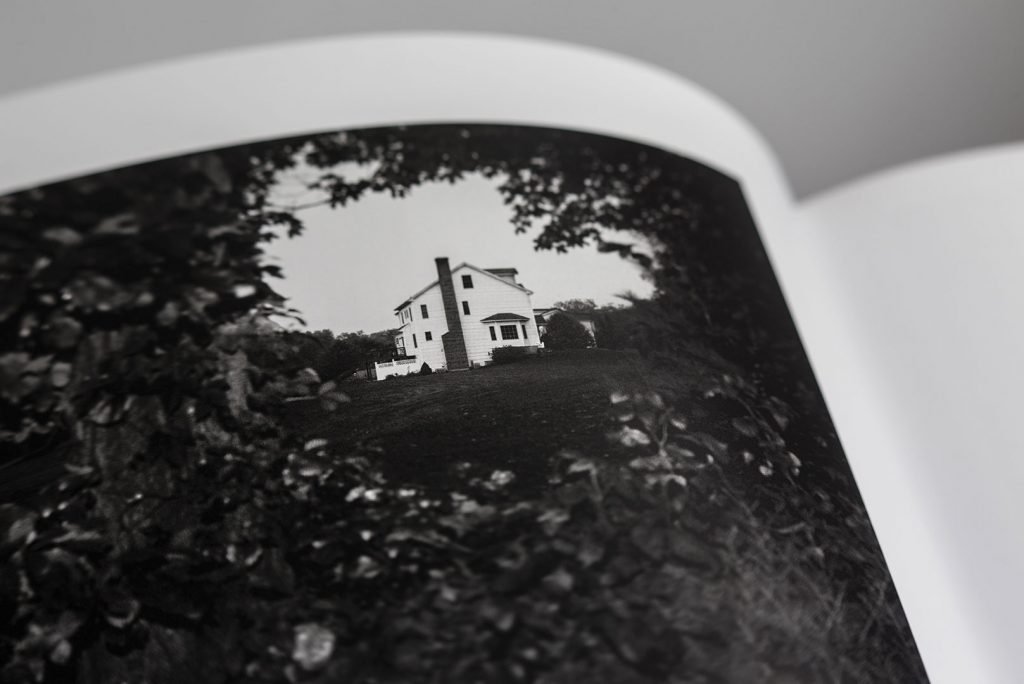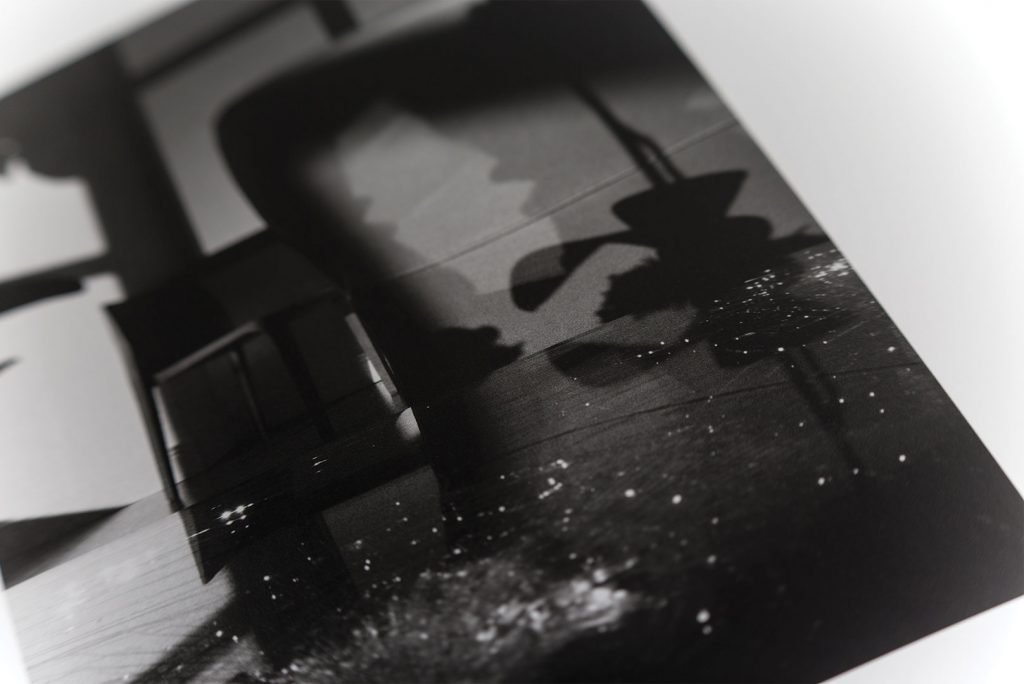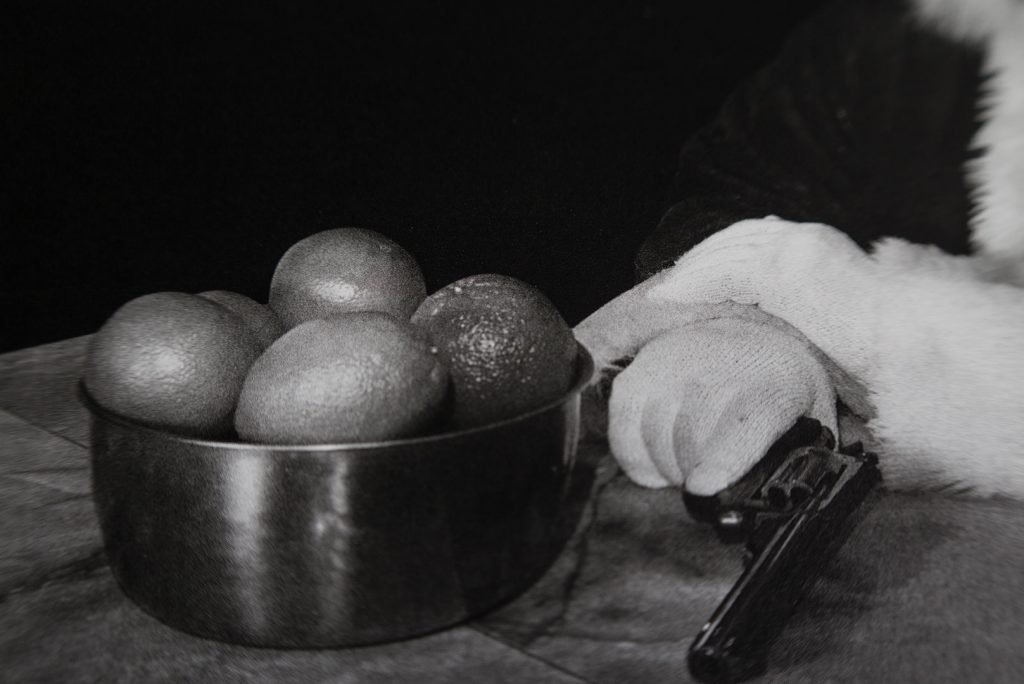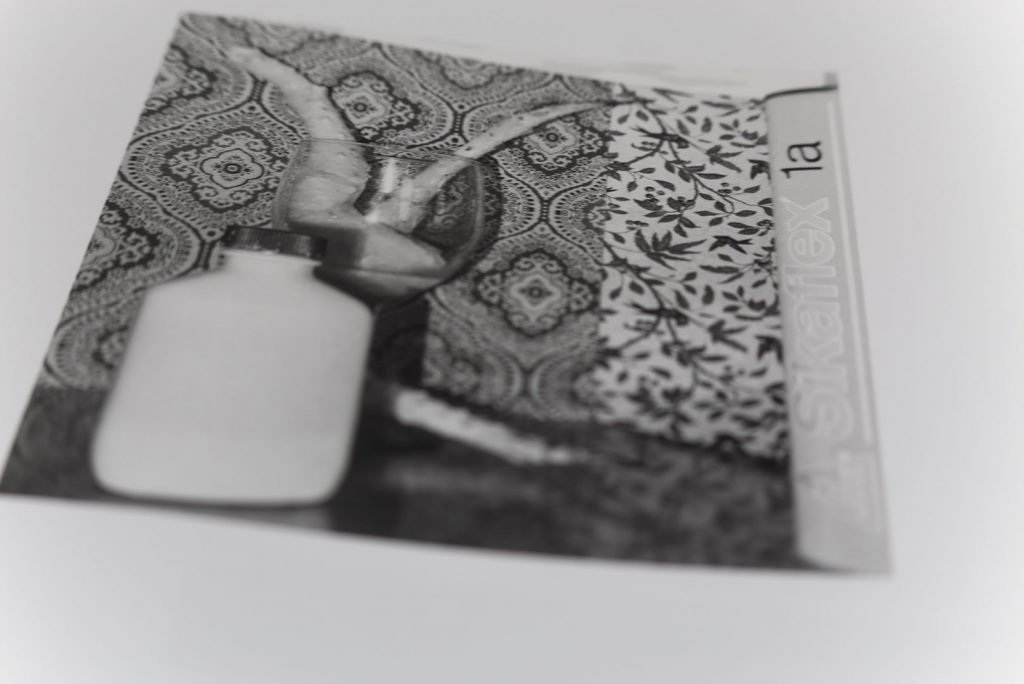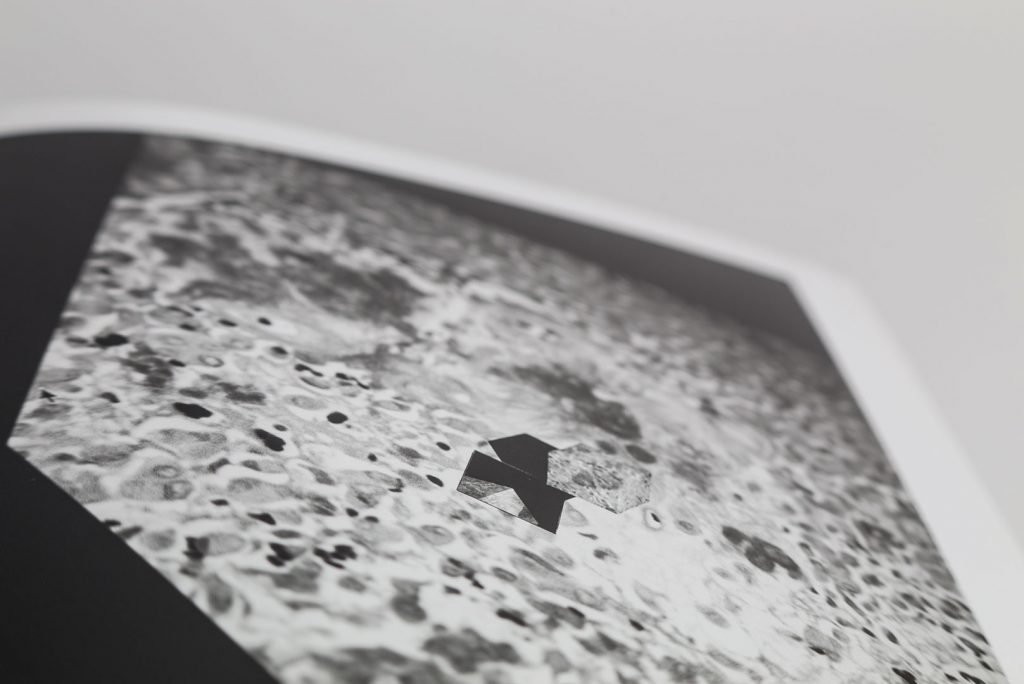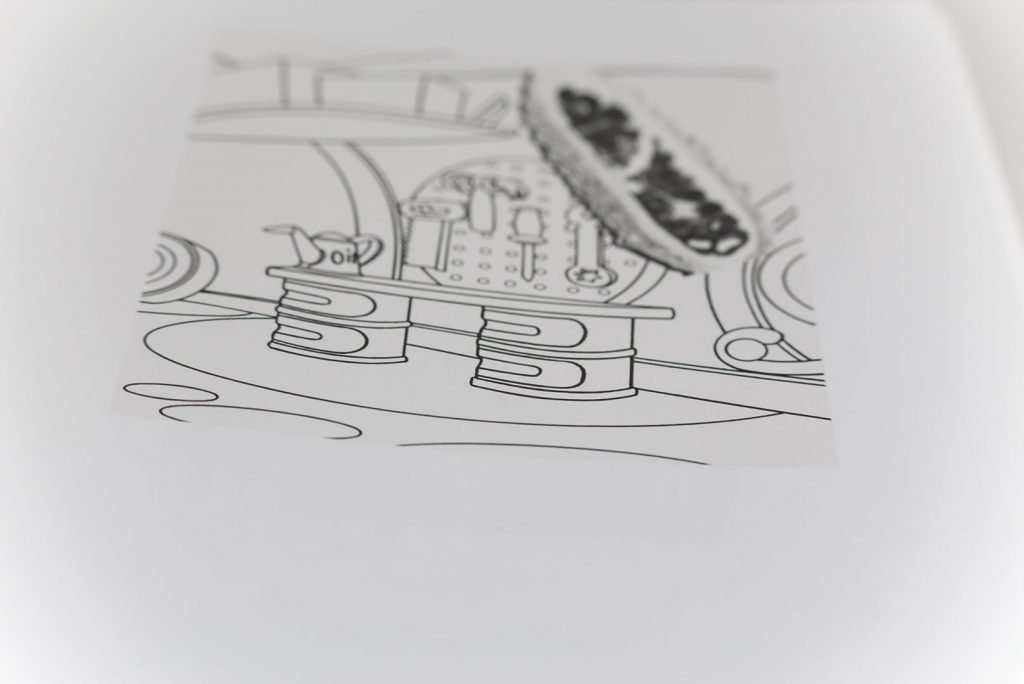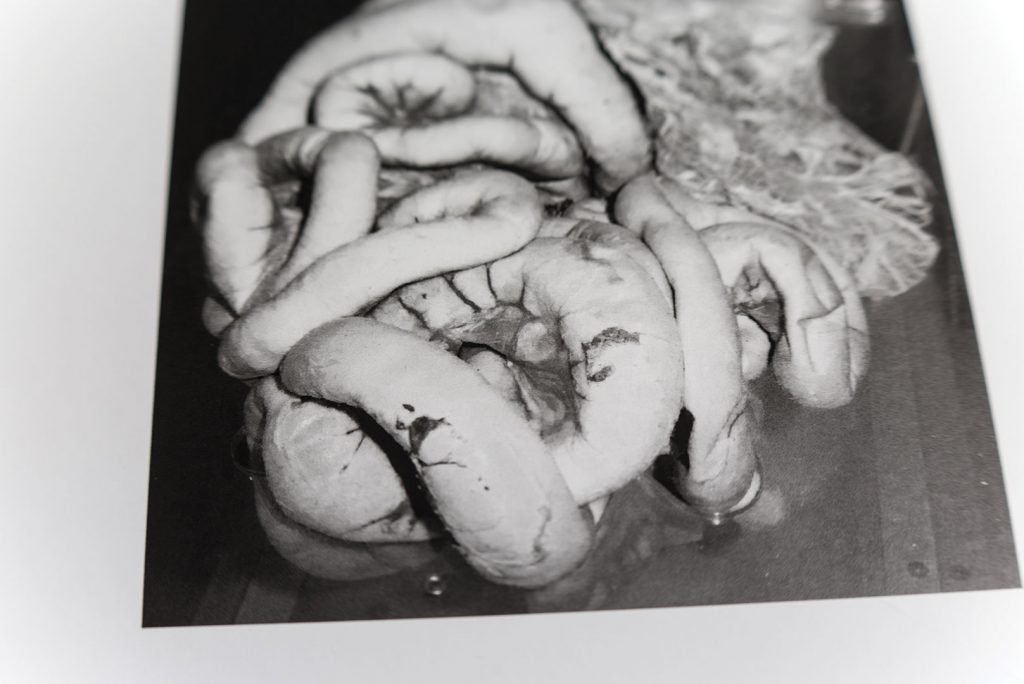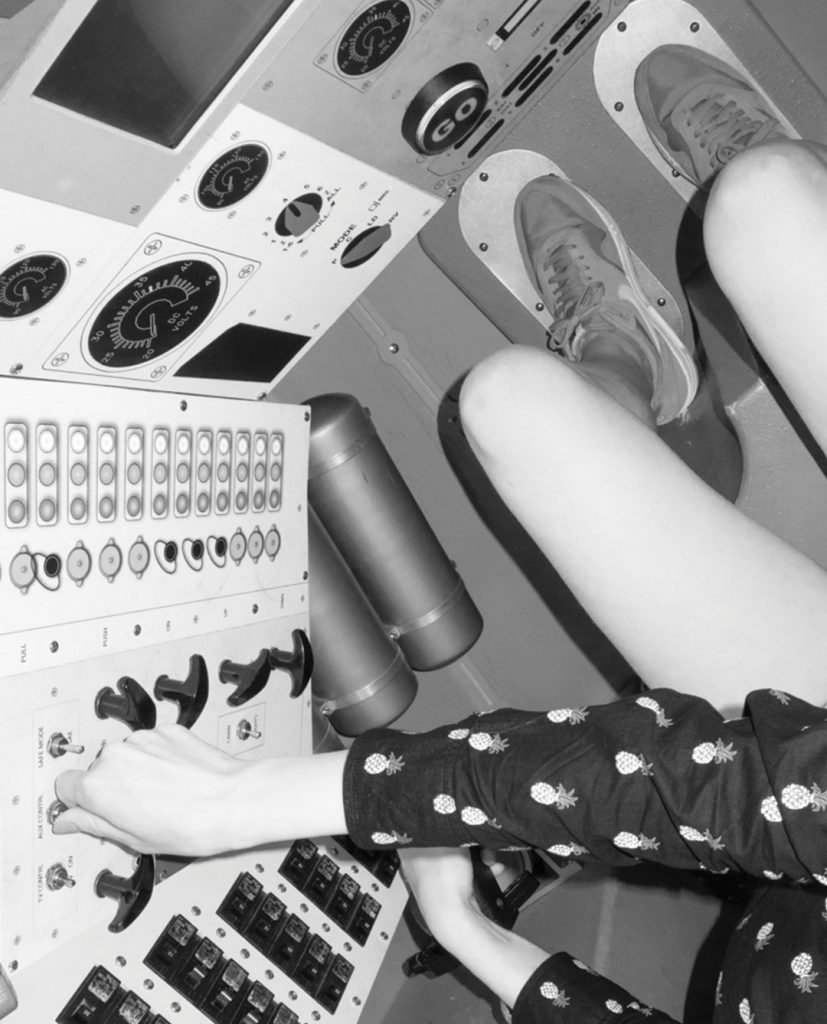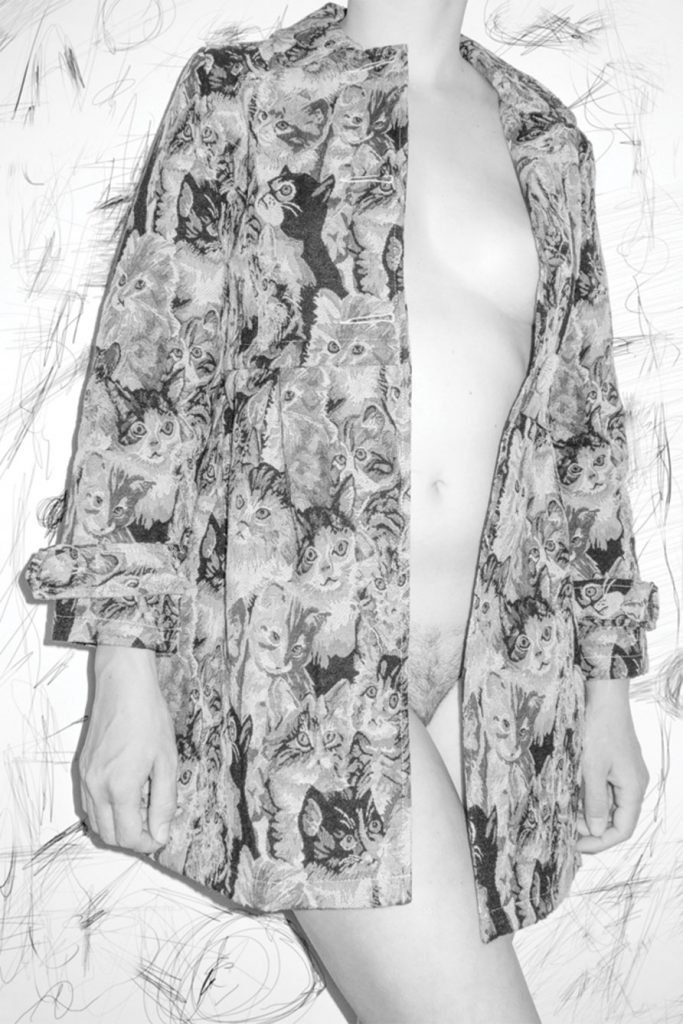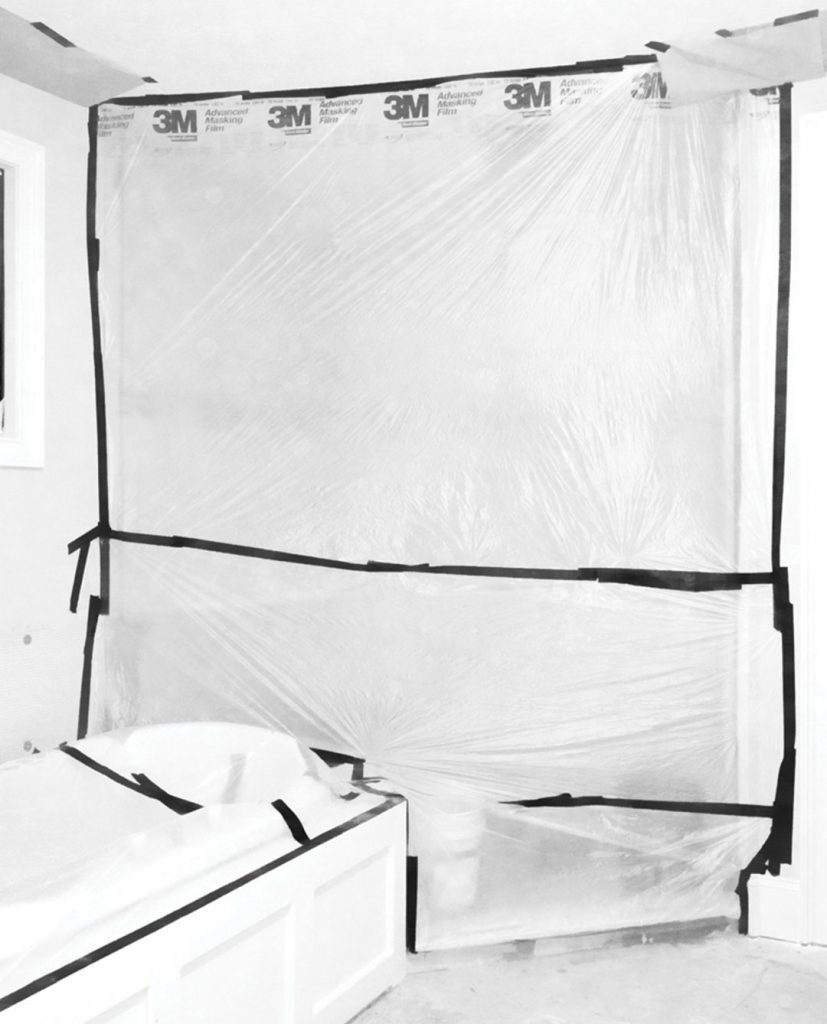The first obvious element in Fumi Ishino’s Rowing a Tetrapod is the scanning of a clear and recognizable rhythm: the white space, widespread among pages, builds a context in which images appear slowly, tapping with the tip of the fingers in light touches the surface of the book.
This inceptive moment appears as a dissolve, speaking in cinematic terms. The details are the curtain-raiser of the book; domestic objects, a nocturne lacustrine landscape dotted with swan boats, a zoomorphic lamp, the fragment of a room lit by a glimpse of light that cruelly isolates one side, a woman’s portrait, uncanny and unforgiving. Ishino’s view appears askew almost, within a practice that tends to hide more than revealing, shifting his gaze to the margins of the subject, out of field, looking for a visual reverberation rather than a story. Only when, a little later in the book, we encounter an official portrait of a NASA astronaut (dedicated to the author; a meta-photographic attitude that perhaps takes a little tension off this first part of the book), we begin to catch sight of this transversal horizon of this authorial practice.
In Ishino’s tales regarding his work, attention is drawn to emotional discontent, the result of living between two countries (Japan/USA). The nomadic experience enters the process of constructing the artist’s imagination; here we explore the inconsistency of a precise margin, between real and fictional, between reality and staged, preferring the symbolic and the abstract rather than the descriptive and the objective. It is clear in Rowing a Tetrapod that the transition from one photograph to another, so unexpected and uneven, is an attempt to erase the traces of the more explicit subjectivity of the artist, his personal style, which here is annotated and intentionally evanescent. The artist’s gesture is therefore to liquefy his body of work, allowing it
to slide slowly between one page to the other, creating a space between metaphor and abstraction, in which the spectator is asked a particularly responsive and participatory attention.
Towards the end of the book a page from a grammar manual appears several times, which we perceive is to learn Japanese from English, and serves as a junction for unrelated photographs.
Here, the ideogram, understood as a graphic symbol with no phonetic value rather than an image or an idea, becomes thus a possible exegetical tool that allows us to decipher, ideally, the entire corpus of the book.
Giangiacomo Cirla: Hello Fumi, can you introduce your new book, Rowing a Tetrapod?
Fumi Ishino: Hello! The work channels my nomadic experience of moving back and forth between two distinct cultures (US and Japan), with divergent social norms. I attempt to confuse the sense of location, space, and time with images and sequences.
GC: What is the main theme, the aspect that is mainly being investigated with this work?
FI: Mixing images that contain unfamiliar cultural norms, language, or multiple meanings can cause misinterpretation or diversity of interpretation. The word “misinterpretation” could have a negative connotation as it relates to conflicts of understanding or miscommunication, but the action of “misinterpreting” could also add new meaning to the work outside of pre-existing definitions.
GC: How do the use of two apparently distant places like the United States and Japan affect your work?
FI: Though I have lived in each country for more than 10 years, I am becoming more foreign in both places. I still make mistakes when it comes to understanding cultural differences such as behavior and language, but I also discover new approaches or perspectives about social norms and values by failing and misreading.
GC: Why this choice?
FI: Having an itinerant lifestyle allows me to observe various cultural and social issues from inside and outside of these countries.
GC: What’s your strongest memory of your childhood?
FI: Since my family moved around quite often for my father’s job, I felt disconnected from structures of society such as norms, rules and expectations. Later my family bought a house to settle in to for a while. I still felt that something was off. Maybe it was because of an eerie/surreal big burial mountain right in front of our suburban house. Our address number was 427 which can be interpreted as “you die” in Japanese. I lived in this haunted house till moving to the U.S.
GC: Do you think your work is more influenced by your origins (Japan) or the place where you have grown up and where you have reached an artistic maturity (united states)? or is it a synthesis of both?
FI: I think it is influenced by both, which also has contradictory effects on my art practice. In realty, I have had a hard time conveying some ideologies, values, and concepts while living among these different cultures. However, visual language is my flexible altered tool to experiment with this process. Some images or ideas can be translated well, but others might cause confusion as a funny joke could turn out to be boring depending on one’s background or location.
GC: This dualism is then translated into your work in an investigation of identity, what is the result?
FI: I believe that some questions can stay as they are. It is too complex for me to have one answer. I am not interested in categorizing things as good or bad, black or white, and yes or no. I hope that my investigation of identity allows me to focus on the process of questioning, not answering.
GC: By observing your work I get a sense of disorientation due to a lack of detail, how do you get this effect?
FI: Most of the images have visually clear contours, but I wanted to increase the sense of abstraction.
One’s sense cannot be independent by itself but is heavily modified by “background“ or external information. I blurred partial “background” details by utilizing intense black and white tones, so that the gauge for determining space and time could increase ambiguity.
GC: A very important aspect in your work is the use of white space, can you talk about it?
FI: I use a laconic layout, where the empty spaces and sequencing allow the images to float on the page, and seek to confuse the viewer’s sense of space and time. I want to efface the traces of where and when the photographs have been produced. It’s a nomadic, Anonymous approach that echoes my experience of being in between two different countries. Also, emptiness or blank space does not mean that there is nothing there. Sometimes the image itself can function as “blank space”, and “blank space” can function as an image.
GC: In your work there is a very thin limit between the real and fictitious, between the reality and staging, why is that? and what sensation or thought do you hope to be born from observing your work?
FI: I am interested in images that look familiar and recognizable, but actually contain opposing content. I enjoy mixing conflicting elements that cannot be easily identified in order to seek diverse interpretations.
GC: Professionally, what’s your goal? What plans do you have for the future?
FI: I make New Year’s resolutions every year and usually forget about most of them after three days. Making more work and exercising are always on my list. Recently I pulled a muscle while carrying a relatively light carbon fiber tripod. I enjoy researching and learning from related and unrelated materials when formulating my thoughts, but I should probably start to read some work out books to at least feel healthy. That would probably be a good way to start thinking about my future.
website: Fumi Ishino
publisher: MACK
–
review by Francesco Bertocco
–
copyright © Fumi Ishino and PHROOM, all rights reserved
–
